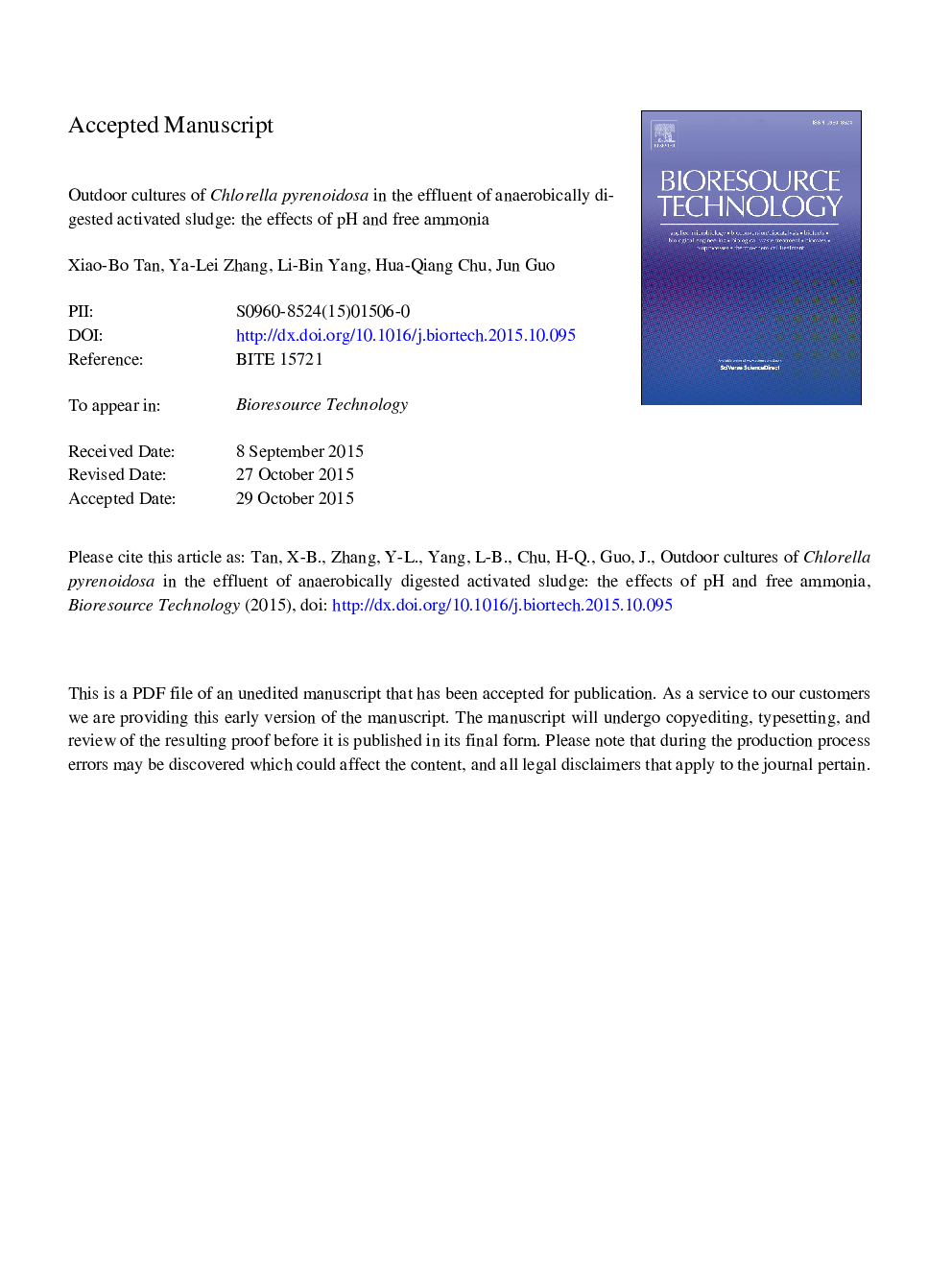| Article ID | Journal | Published Year | Pages | File Type |
|---|---|---|---|---|
| 7073088 | Bioresource Technology | 2016 | 41 Pages |
Abstract
A freshwater algae Chlorella pyrenoidosa was cultured outdoors using anaerobically digested activated sludge effluent. The effects of pH variations were evaluated. The coupled pH variations and free ammonia toxicity significantly affected the algal growth, lipids accumulation and contamination control during every season. The free ammonia toxicity at high pH levels actually inhibited the algal growth. Compared to an optimal algal growth at a pH of 5.7-6.5, biomass productivity at a high pH of 8.3-8.8 was reduced by 67.15 ± 6.98%, 54.39 ± 6.42% and 83.63 ± 5.71% in the spring, fall and summer, respectively. When the pH rose above 9.1-9.6, algae were unable to grow in the wastewater. However, high pH levels reduced contamination (e.g., bacteria and microalgae grazers) and triggered lipids accumulation in algal cells. These findings suggest that pH control strategies are essential for this type of algal wastewater system, where ammonia is the dominant nitrogen source.
Keywords
Related Topics
Physical Sciences and Engineering
Chemical Engineering
Process Chemistry and Technology
Authors
Xiao-Bo Tan, Ya-Lei Zhang, Li-Bin Yang, Hua-Qiang Chu, Jun Guo,
